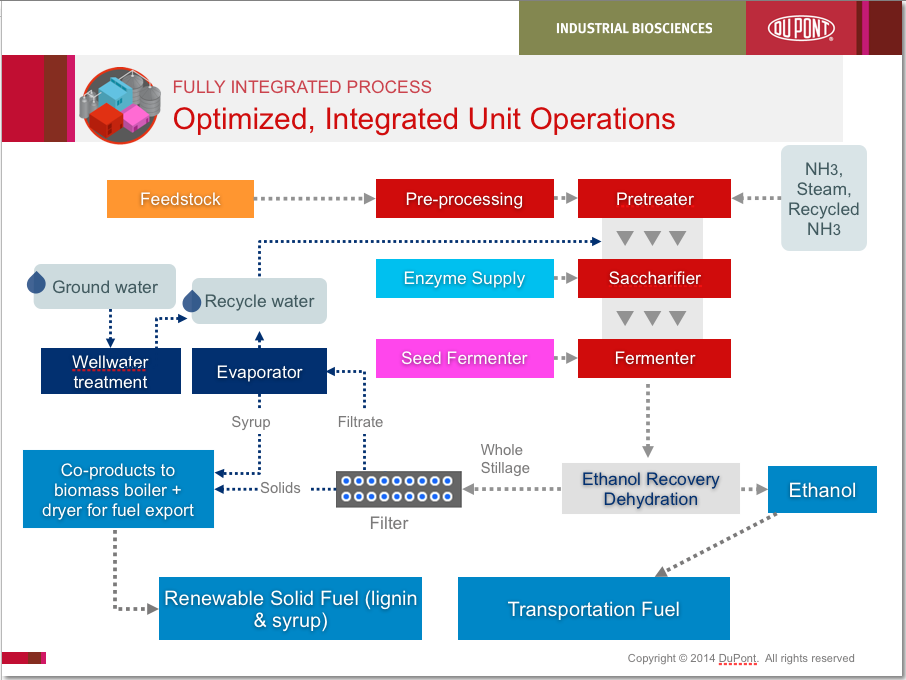 I don’t know much about liquid detergent formulation other than detergent is largely composed of surfactants so I am surprised that it also uses ethanol (or also called ethyl alcohol) as a solvent. Procter & Gamble said ethanol has long been a key ingredient in the Tide® formulation, allowing for stability of the detergent formula and better washing performance.
I don’t know much about liquid detergent formulation other than detergent is largely composed of surfactants so I am surprised that it also uses ethanol (or also called ethyl alcohol) as a solvent. Procter & Gamble said ethanol has long been a key ingredient in the Tide® formulation, allowing for stability of the detergent formula and better washing performance.
P&G just announced this week that it will be using cellulosic ethanol for its North American Tide laundry detergent, which it will source from DuPont’s new 30 million gal/year biorefinery that is currently being constructed in Nevada, Iowa. Tide Cold Water will be the first brand in the world to blend cellulosic ethanol in a scalable and commercial way, the company claims. This is a pilot partnership with the potential to be scaled up. The aim is to be a catalyst for change across the industry.
There has been skepticism on the viability and economics of cellulosic ethanol production in the US especially with the uncertainty of the EPA’s Renewable Fuel Standard (RFS) yearly volume requirements. DuPont itself has recently been criticized by an investor for its biofuel projects including the Nevada, Iowa, plant. DuPont said it is taking the first step to diversify its markets for cellulosic ethanol beyond fuels.
Aside from solvents, there are definitely a lot of downstream industrial applications for ethanol such as in pharmaceutical, cosmetics, inks, and paints. Not to forget that it is also used in beverages. However, you can further processed ethanol into ethylene and ethylene derivatives as what Braskem has been doing for its I’m Green polyethylene plastics, and what Coca-Cola has been using for its PlantBottle PET packaging.
Procter & Gamble said its size and scale provides a unique opportunity to impact the global market and help change consumer behavior. Tide® Cold Water “powered by nature” will re-purpose over 7000 tons/year of agricultural waste (corn stalks, cobs, leaves), an equivalent to the power needed to do all the washing in homes across California for over a month. It was reported that the Tide Coldwater detergent has sales of $100 million in North America.
Consumers are reportedly focusing more on how their personal behavior and the goods they buy impact the environment but while about 70% of shoppers want to be sustainable, they can’t or won’t make tradeoffs on performance. P&G said it is making its products better, so it is easier for everyone to make a small change every day to care for the environment.
DuPont’s biorefinery will be supplied with locally-sourced biomass from over 500 local growers. The biorefinery will have zero net carbon emissions. It is believed that the biorefinery will start operation before the end of the year.





One response to “P&G to use DuPont’s cellulosic ethanol in Tide”
Excellent article; good research